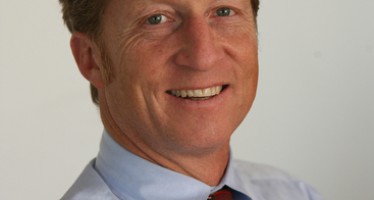New CARB Scoping Plan claims fighting ‘climate change’ is a ‘great unifier’
Yesterday the California Air Resources Board released the first update of its Climate Change Scoping Plan. The original Scoping Plan came out in Dec. 2008. Assembly Bill 32, the Global Warming Solutions Act of 2006, required the original Scoping Plan and updates every five years.
The new plan concludes that climate change can be combated and the economy can grow at the same time. It also claims battling climate change can be a “great unifier” for all the state’s activities.
The updated plan reaffirms that it will stay on the course of AB32:
“Climate change presents an unprecedented set of challenges for California. We are already experiencing its impacts and know they will only increase. But it can also be a great unifier.”
Comprehensive plan
The updated Scoping Plan includes:
- Energy. The main element of the plan is to bring about a “comprehensive greenhouse gas reduction program for the state’s electric and energy utilities by 2016.” Thus far, California’s energy policy has shut down the cleanest and cheapest power plant in the state – the San Onofre Nuclear Generating Station. It has also ordered a shut down of all 19 California coastal power plants that rely on ocean water to cool its steam turbines. This has resulted in conflicts with local coastal communities which don’t want the older power plants replaced with natural gas powered plants.
- Water. The plan promises to “enhance water quality and supply reliability, while also addressing climate resiliency requirements.” No mention is made how this would come about with no added water storage reservoirs in California to face droughts such as California is now experiencing.
The main strategy for water management will be “to employ pricing policies [that] will maximize efficiency and conservation efforts…to reduce greenhouse gas emissions and maintain water supply reliability during drought periods.”
“Pricing policies” likely means higher water rates and adding no more water storage reservoirs. Such policies are not resulting in unification but greater conflict between Central Valley farmers and environmentalists.
- Green Buildings. Green buildings are also a part of the plan, despite empirical findings that energy-efficient buildings make people sick. Whether the health lifestyle movement or the environmental movement will prevail on energy-efficient buildings is an unresolved conflict.
- Cleaner Fuels. The plan’s goal to continue with its Low Carbon Fuel Standard of lower carbon transportation fuels has brought a swarm of lawsuits challenging the policy on multiple legal grounds.
Eight years after
The new Scoping Plan does not deal with many objections that have cropped up since AB32 was passed in 2006. But there has been a lot that the public has learned about what used to be called “global warming” but is now called “climate change”:
- Climategate. Hacked emails from the Climate Research Unit at the University of East Anglia in Britain in 2009 showed some global-warming scientists manipulated the data and suppressed critics.
- “Pseudoscientific.” In 2010, U.C. Santa Barbara renowned emeritus professor of physics Hal Lewis resigned from the American Physical Society saying “global warming is the greatest and most successful pseudoscientific fraud” in the history of science and that government money had corrupted the integrity of science.
- “Less cooler.” Eminent former California state biologist Jim Steele released his 2013 book, “Landscapes and Cycles: An Environmentalist’s Journey to Climate Skepticism,” showing that 100 years of temperature readings near Lake Tahoe indicated “the world isn’t getting hotter, it is getting less cooler.” Steele is skeptical that global warming has anything to do with declining fish, droughts and flooding, or a sea-level rise in the Sacramento Delta.
- “Incomprehensible.” Climate scientist Judith Curry of Georgia Tech called the Intergovernmental Panel on Climate Change assessment report of 2013 “incomprehensible” because it concluded global warming was due to greenhouse gases like C02. But there have been more greenhouse gases and less warming in the last 18 years.
- Statistically insignificant. No 15-year interval yields a statistically significant global temperature trend. Worse, no 130-year period has indicated any statistically significant trend in world temperature. Even if the temperature rose in the past, it was not statistically significant. Statistical significance is an event that is not likely to occur randomly, but is attributable to a specific cause.
- Predictions. Historian Rupert Darwall of Cambridge University released his 2013 book, “The Age of Global Warming: A History,” documenting the number of failed pseudoscientific predictions of global warming and resource depletion by William Stanley Jevons in 1865, John Tyndall in 1859, Guy Stewart Callendar in 1896, Gifford Pinchot in 1909, Charles Keeling in 1956, Rachel Carson in 1962, Paul Ehrlich in 1968 and James Hansen in 1988. Republicans Teddy Roosevelt and Richard Nixon and Democrats Jerry Brown, Jimmy Carter and Lyndon Baines Johnson all embraced global warming predictions.
Expansion
CARB does not refute any of the above. Instead, CARB’s 159-page plan lauds the accomplishments of cleaner and more efficient energy, cleaner transportation and the cap and trade air emissions taxation program.
As the new Scoping Plan notes, the defeat of Proposition 23 in 2010, which would have restricted AB32 implementation, indicates that CARB’s new powers in regulating vast new areas of the state economy will continue and expand.
Related Articles
Do Californians want to raise oil taxes?
Are Californians ready for another tax increase? That’s what California hedge-fund manager Tom Steyer sought to find out in his “People’s
CA's Wind Power Scam
FEB. 19, 2011 By WAYNE LUSVARDI Wind power is a medieval technology that most people visualize coming from Dutch windmills
Snake Oil Legislators
APRIL 21, 2010 Nearly every person I talk to is either feeling the crush of the bad economy or knows



